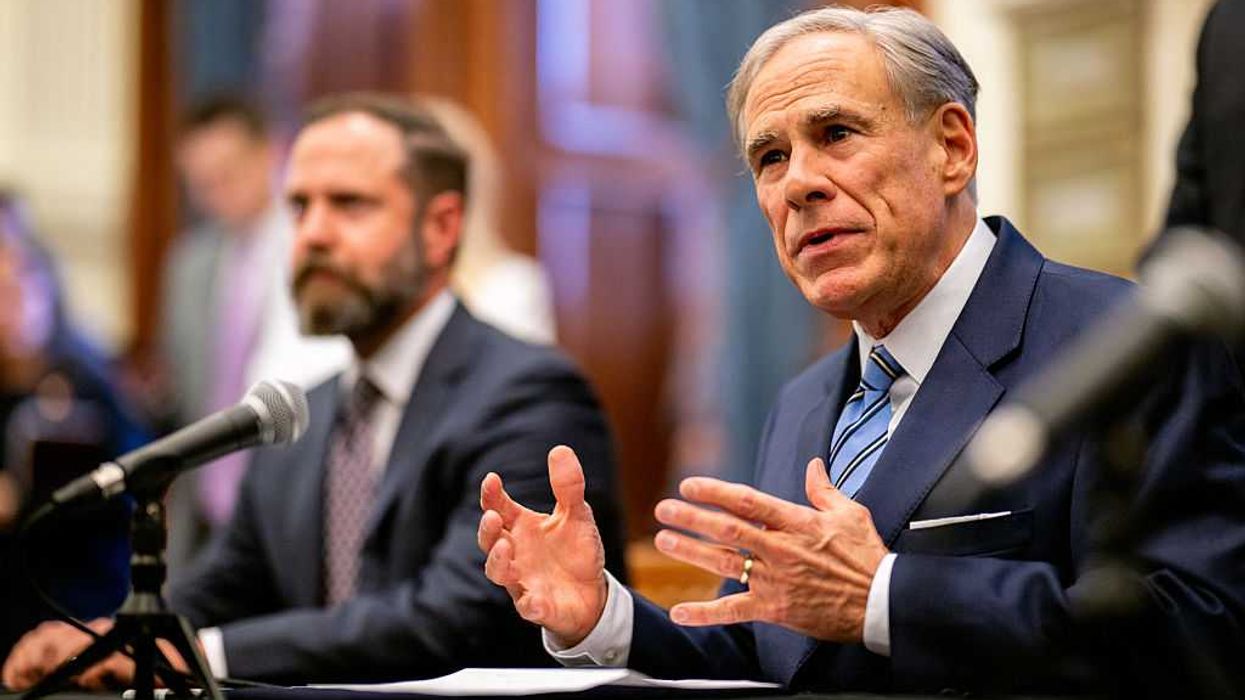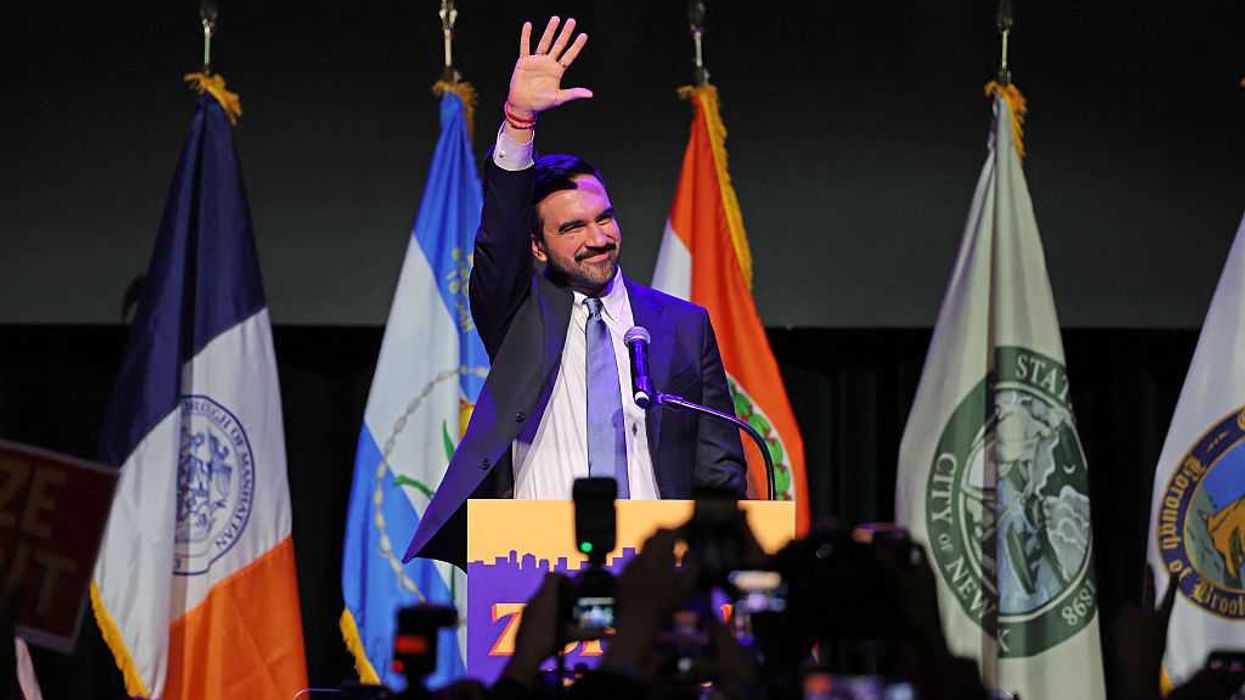A 2011 Rasmussen poll revealed that 11% of Americans believed communism would provide a better system of politics and economics than the United States' free market system. However, more recent polls among young Americans show a disturbing trend.
The increased favorability of socialism --- the stepping stone to communism --- among young Americans is staggering:1
• 53% under 30 years of age have a favorable view of socialism (Reason-Rupe, 2/12/15)• 69% of Millennials would vote for a socialist candidate (Gallup, 6/22/15)
What's the best way to reverse this disturbing trend among young Americans who think the twin sisters of socialism and communism are cool? The truth.
1 | The Government Controls Everything
Don't like the burden of making decisions on your own? No worries. Under communism --- and socialism --- the government steps in to take care of everything with a one-size-fits-all approach. While economic equality sounds great, in reality it doesn't work because people are different. One size doesn't fit all. With all resources under control of the state, the system becomes rigged as corporate welfare runs rampant and the government chooses winners and losers. Economies decline, freedoms are removed and opposition is silenced. Socialism --- and communism --- fails the people it claims to represent by controlling their lives and limiting their opportunity. It is an ineffective and antiquated system that hurts those it claims to help.1
2 | Mass Murder
According to a disturbingly pleasant graphic from Information is Beautiful, entitled 20th Century Death, communism was the leading ideological cause of death between 1900 and 2000, ending the lives of 94 million people in China, the Soviet Union, North Korea, Afghanistan and Eastern Europe. In fact, the graphic shows that more people died in the 20th century as a result of communism than from homicide (58 million) and genocide (30 million) combined --- but it gets worse. A look at deaths caused by the natural world includes famine (101 million). Curiously, the world’s worst famines in the 20th century occurred in communist countries: China, the Soviet Union and North Korea.2
3 | Starvation
What better way to control people than with their food supply? Take Soviet Russia in the 1930s, where an estimated seven to 10 million people died agonizing deaths from starvation or from birth defects related to malnutrition. The Holodomor, literally translated from Ukrainian meaning "to kill by hunger, to starve to death," was a man-made famine in Soviet Ukraine in 1932 and 1933. Long before Hitler's horror was revealed, the spirit of individualism threatened Joseph Stalin's communist design for the Soviet Union. Stalin forced peasants to give up their farms under the banner of collectivism, plunging the Ukraine into famine. So desperate was the situation that widespread reports of cannibalism surfaced. Ukrainians now gather each year to light 25,000 candles in remembrance of the 25,000 people who died daily during the Holodomor.3
4 | Che Guevera
Inexplicably, the face of mass murderer Che Guevara has become a hip novelty on t-shirts, belt buckles, beer cans and even baby onesies. Guevara has been romanticized by the clueless and radical left as a hero and freedom fighter. In fact, nothing could be farther from the truth. Che was a self-taught revolutionary who was instrumental in Castro's takeover of Cuba, where 14,000 men and boys were executed during the 1960s. Guevara became known as the butcher of La Cabaña prison, where he personally oversaw the executions of anywhere from 175 to several hundred people. He was complicit in thousands of deaths after that, saying his dream was to become a killing machine.4
5 | This Land Is Not Your Land
The very first plank of the Communist Manifesto is the "abolition of property in land and application of all rents of land to public purposes." In other words, you can't own land or make money from owning land. Your land becomes the property of the collective. No matter how hard you worked to acquire your property or how many generations have owned it, your land is no longer yours. You might want to make room for the strangers that will be moving in soon.5
6 | Mao Zedong
Can you name the greatest mass murderer of the 20th century? It wasn’t Hitler or Stalin. It was Mao Zedong. According to the authoritative Black Book of Communism, an estimated 65 million Chinese died as a result of Mao’s repeated, merciless attempts to create a new “socialist” China. Anyone who got in his way was done away with --- by execution, imprisonment or forced famine. For Mao, the No. 1 enemy was the intellectual, and he boasted of burying alive 46,000 of them. During his Cultural Revolution in the 1960s when he sensed that revolutionary fervor in China was waning, gangs of Red Guards --- young men and women between 14 and 21 --- roamed the cities targeting revisionists and other enemies of the state, especially teachers. Professors were dressed in grotesque clothes and dunce caps, their faces smeared with ink. They were forced to get down on all fours and bark like dogs. Some were beaten to death, some even eaten --- all for the promulgation of Maoism. A reluctant Mao finally called in the Red Army to put down the marauding Red Guards when they began attacking Communist Party members, but not before one million Chinese had died.6
7 | No Free Speech
Under communist regimes, free speech is not tolerated, especially if it involves speaking out against the government. When people voice unfavorable political views toward the state, they most likely end up in jail---or dead. That's exactly what happened to Cuban artist Danilo Maldonado, who was detained for 10 months without a trial following the death of Cuba's communist dictator Fidel Castro. Maldonado made the mistake of mocking the dead revolutionary and taking two pigs to perform in an informal production of George Orwell’s anti-communist satire Animal Farm.7
8 | Pol Pot
Pol Pot and his communist Khmer Rouge attempted to socially engineer a classless peasant society from 1975 to 1979. He took particular aim at intellectuals, city residents, ethnic Vietnamese, civil servants and religious leaders. Almost immediately after taking power, the Khmer Rouge evacuated Phnom Penh’s 2.5 million residents. Former civil servants, doctors, teachers and other professionals were stripped of their possessions and forced to toil in the fields as part of a reeducation process. Those that complained about the work, concealed their rations or broke rules were usually tortured in a detention center, such as the infamous S-21 where only seven of roughly 20,000 people survived. The state controlled all aspects of a person’s life. Money, private property, jewelry, gambling, most reading material and religion were outlawed; agriculture was collectivized; children were taken from their homes and forced into the military; and strict rules governing sexual relations, vocabulary and clothing were laid down. It's estimated that 1.5 million Cambodians out of a total population of 7 to 8 million died of starvation, execution, disease or overwork.8
9 | So Long Art, Music, Poetry, Books and Newspapers
Communists don't like artistic or intellectual types. In general, they're not fond of people who can think for themselves. Those are usually the first folks to be controlled --- or eliminated. Intellectuals and creatives who express political views through their work represent a threat to the state. That kind of individualism cannot be tolerated in a collective society. Vladimir Lenin believed that literature and art could be exploited for ideological and political as well as educational purposes. As a result, he rapidly established control over print and electronic media, book publishing and distribution, bookstores and libraries, and created or abolished newspapers and periodicals at will.9
10 | No Incentive to Succeed
What's the point of working hard when you can't reap the benefits? Under communism, everything belongs to the "collective," which really means the state. And the state decides exactly who gets what, how much and when. There are no incentives for anyone other than politicians who, of course, live outside the economic rules of their society. Money becomes worthless because there is little to buy. Laborers engage in ever poorer workmanship. State-owned and -managed companies survive only because the public is forced to buy their shoddy goods. Communism is an economic construct that simply doesn't work because it kills all incentive and work ethic.10
Sources:
1 Generation Opportunity Institute
3 BBC
4 ReasonTV
9 Ibiblio
10 Newsmax

 Brandon Bell / Staff | Getty Images
Brandon Bell / Staff | Getty Images
 Europa Press News / Contributor | Getty Images
Europa Press News / Contributor | Getty Images ANGELA WEISS / Contributor | Getty Images
ANGELA WEISS / Contributor | Getty Images Eric Lee / Stringer | Getty Images
Eric Lee / Stringer | Getty Images